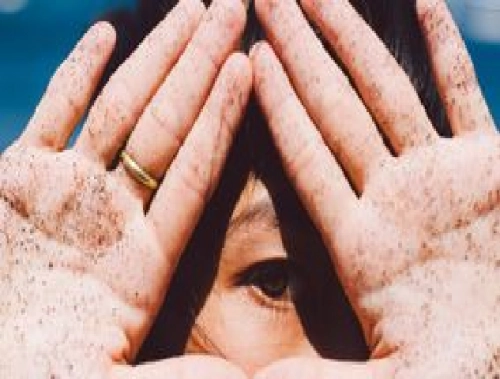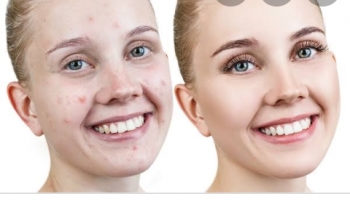EntertainmentNews And PoliticsPersonal Care And BeautyHealth And LifestyleOthersMotivationalsSports And FitnessNewsHealthCelebrityIT And Computer ScienceStoriesScience And TechnologyBusiness And MoneyGeneralTechnologyBeautyQuestions And AnswersAgricultureArts And EducationFitnessPoliticsBusinessLifetipsSportsLifestyleEducationMotivationFamily And HolidaysReligion And Principles
DemuchGS
Computer Scientist : Am A Skillful Person, I Love Advertising And I Am Into Blogging, Am A Content Creator, IG: Demuchgs, Facebook: Demuch Spacial, Page: Official Demuch
Wants to meet Just Friends
Articles
561
Followers
32
profile/919images-01.jpeg
DemuchGS

Places You're Missing When You Apply Sunscreen
~4.2 mins read
Before heading outside, you may be in the habit of slapping SPF on your face, arms, and legs. And that’s a start — but don’t stop there.
According to the American Academy of Dermatology Association, most adults need 1 ounce (or 2 tablespoons) of sunscreen to cover exposed skin on the whole body. But, they add, most people only apply between 25 and 50 percent of that amount.
“Sunscreen should be used daily, regardless of the weather, and reapplied every two hours,” says Michele Green, MD, a board-certified dermatologist based in New York City. And if you’re swimming or sweating, reapply again afterward, recommends the Skin Cancer Foundation.
Certain spots — like the scalp, lips, ears, neck, and chest — tend to be overlooked, either because applying sunscreen to them is uncomfortable or because the area doesn’t seem to get enough sun to warrant SPF. But many of these areas are among the top areas where skin cancer develops, according to the Mayo Clinic.
In fact, having five or more sunburns doubles your risk of melanoma, a potentially deadly form of skin cancer, per the Skin Cancer Foundation. But using an SPF of 15 or higher every day reduces that risk by 50 percent, so it’s important to slather your sunscreen everywhere the sun hits.
Need another reason to load up on SPF? Consider UV's long-term effects on your skin. Ninety percent of skin aging can be blamed on the sun, notes the Skin Cancer Foundation, but one study found that people who reported daily use of a sunscreen with an SPF of 15 or higher showed 24 percent less skin aging compared with those who did not consistently use sunscreen.
1. Ears
Thanks to all their folds, the ears are not the easiest place to apply SPF. But they get plenty of sun, so don’t skip them (yes, even if you have long hair). The Cleveland Clinic says the ears are the third most common location for skin cancer.
Don’t just lotion up the lobes, though: “I see skin cancers on all parts of the external ear,” says Tanya Nino, MD, a board-certified dermatologist and the melanoma program director at Providence St. Joseph in Orange County, California. “Behind the ears, including the crease behind the ear, is also a common spot where skin cancers form.”
Apply a broad-spectrum cream sunscreen of SPF 30 or higher to minimize your risk, Dr. Nino advises, and be sure you’ve covered all areas of the ears, front and back. And don’t forget — wearing a hat with a brim and seeking the shade wherever you can are great ideas too, she says.
2. Scalp
If you think your hair is protecting your scalp, think again. “The scalp is the highest point of the body and thus more likely to burn than other areas,” Dr. Green says. “To help prevent skin cancers, SPF should always be applied to the scalp and the hairline.” Though skin cancer on the scalp isn’t common — it accounts for 2 to 5 percent of all skin melanomas, research has shown — you should still apply SPF. Wearing a hat can help, too.
It doesn’t have to be as messy as you’re likely picturing, either. “There are an array of sunscreens available that are formulated to protect the scalp without leaving behind any residue or a greasy feeling,” Green says. Try a sunscreen powder like Supergoop Poof Part Powder ($32, Supergoop.com) or a mist like Sun Bum’s Scalp & Hair Mist SPF 30 ($14.99, Sunbum.com) that’s specifically designed for the scalp.
3. Eyelids
The skin around your eyes is thin, and that makes it susceptible to skin cancer as well as signs of aging, like wrinkles and sunspots, Green says. Skin cancer on the eyelids accounts for up to 10 percent of all skin cancers, according to Cancer.Net, the website of the American Society of Clinical Oncology.
“Many people refrain from applying SPF to the eyelids due to the sensitivity of the area,” Green says. For protection without the sting, go for a mineral sunscreen that contains titanium dioxide or zinc oxide — you can find one that’s formulated for sensitive skin, Green says. Alternatively, she advises using an eye cream that contains SPF. One option is Bright-Eyed 100 Percent Mineral Eye Cream SPF 40 ($36, Supergoop.com).
Finally, don’t forget your sunnies. “Picking up a pair of sunglasses that offer UV protection is a great investment and can help further protect the eyelids from skin cancers and signs of aging that are accelerated by the sun’s rays,” Green notes.
profile/919images-01.jpeg
DemuchGS

How To Get Rid Of Pimples
~0.4 mins read
Easy and Proven Ways to Get Rid of Pimples Fast
Advertisement

Link socials
Matches
Loading...
